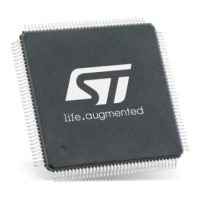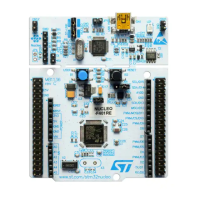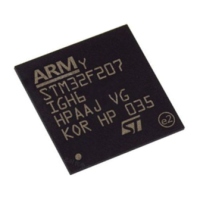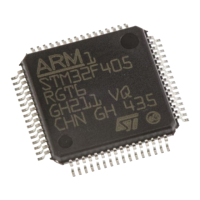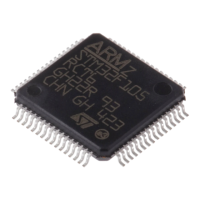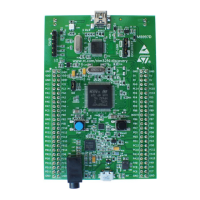PM0215 The STM32 Cortex-M0 instruction set
Doc ID 022979 Rev 1 43/91
3.4.2 LDR and STR, immediate offset
Load and store with immediate offset.
Syntax
LDR Rt, [<Rn | SP> {, #imm}]
LDR<B|H> Rt, [Rn {, #imm}]
STR Rt, [<Rn | SP>, {,#imm}]
STR<B|H> Rt, [Rn {,#imm}]
where:
● ‘Rt’ is the register to load or store
● ‘Rn’ is the register on which the memory address is based
● ‘imm’ is an offset from Rn. If
imm
is omitted, it is assumed to be zero.
Operation
LDR, LDRB and LDRH instructions load the register specified by Rt with either a word, byte
or halfword data value from memory. Sizes less than word are zero extended to 32-bits
before being written to the register specified by Rt.
STR, STRB and STRH instructions store the word, least-significant byte or lower halfword
contained in the single register specified by Rt in to memory. The memory address to load
from or store to is the sum of the value in the register specified by either Rn or SP and the
immediate value imm.
Restrictions
For these instructions:
● Rt and Rn must only specify R0-R7.
● imm must be between:
– 0 and 1020 and an integer multiple of four for LDR and STR using SP as the base
register
– 0 and 124 and an integer multiple of four for LDR and STR using R0-R7 as the
base register
– 0 and 62 and an integer multiple of two for LDRH and STRH
– 0 and 31 for LDRB and STRB.
● The computed address must be divisible by the number of bytes in the transaction, see
Address alignment on page 39.
Condition flags
These instructions do not change the flags.
Examples
LDR R4, [R7] ; Loads R4 from the address in R7.
STR R2, [R0,#const-struc] ; const-struc is an expression evaluating
; to a constant in the range 0-1020.
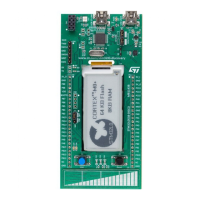
